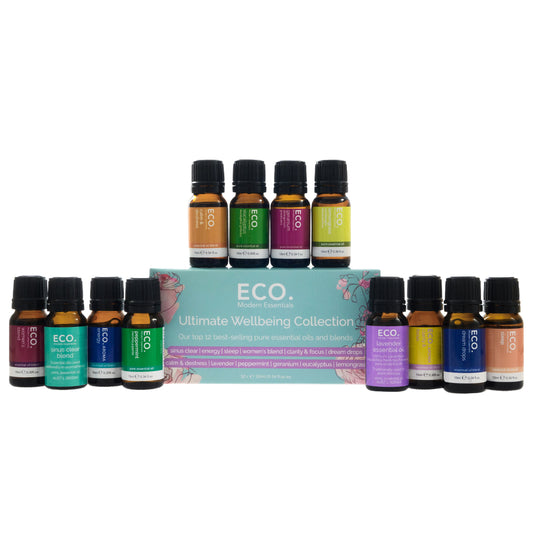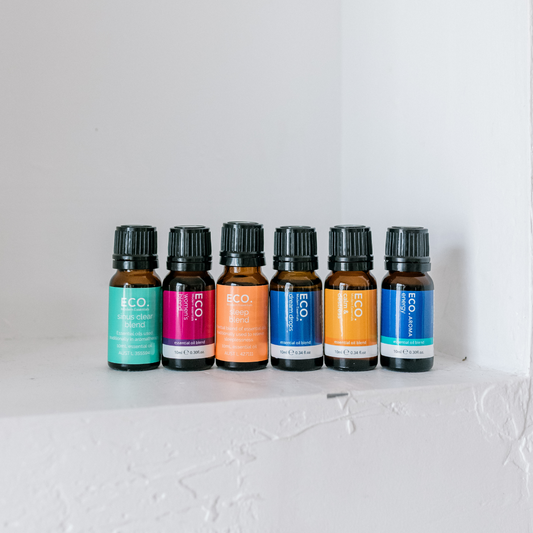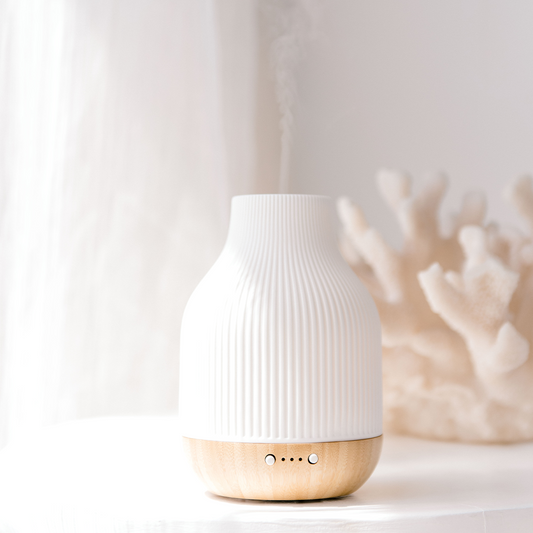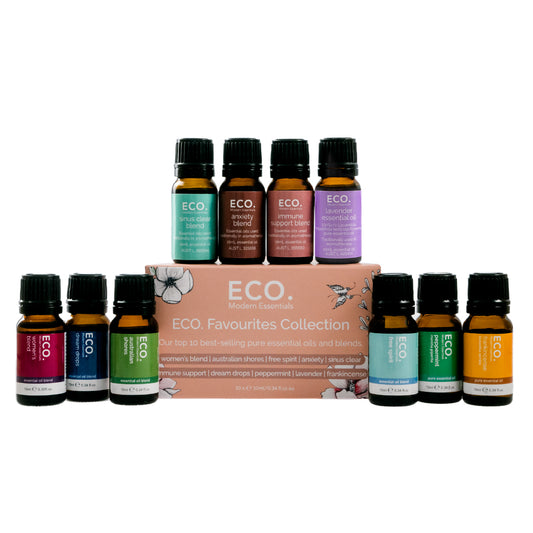
How to Choose Essential Oils For You
Essential oils have some amazing healing properties, and can provide benefits when used individually or in a blend. If you've read our article on Aromatherapy Basics, you'll be familiar with the basics of Aromatherapy. Now it's time to get into the fun part; choosing essential oils to create our own blends.
How do I know which essential oil to choose?
There are so many different essential oils, each with many properties and uses, that it can be a little overwhelming to decide which ones to choose. Luckily, there are also many approaches to selecting essential oils. From picking an essential oil just because it smells nice to matching the chemical composition of an essential oil to the condition being treated, there is an approach for everyone.
Check out some of the popular methods below, to see if any appeal to you and begin creating your own amazing blends from there.
Method 1: The ‘I love this essential oil it smells amazing’ method.
What sort of aroma appeals to you? Some people love the bright, zingy aroma of citrus whereas others gravitate towards the heavy, earthy smells of wood derived essential oils.
Citrus: Lemon, Lime, Lemongrass, Mandarin, Orange, May Chang, Melissa
Herbaceous: Chamomile, Lavender, Rosemary, Basil, Thyme
Wood/ Earthy: Sandalwood, Cedarwood, Vetiver
Spicy/ Warm: Ginger, Black Pepper, Cinnamon, Clove Bud, Juniper
While this method may seem overly simplistic, never underestimate the power of smelling fabulous or how inviting a beautifully fragranced room can be. As a general observation, people tend to be drawn to a particular essential oil when they need it. For example, when feeling mentally fatigued the sharp aroma of Peppermint may sing to your heart. Or, the essential oil blend you used when going through a difficult period becomes less appealing when life begins to improve. Trust your instincts, and choose the scent that feels right to you.
Method 2: The ‘Discovering general qualities of an essential oil’ method.
This method requires some trust in your own intuition and is a nice way to learn about individual essential oils. Pick an essential oil and take a moment to inhale the aroma. How do you feel when you inhale this scent?
- Energising or relaxing
- Warming or cooling
Now, consider the reason you are making the blend and select the quality of the essential oil you need. For example, muscles that feel stiff and cold benefit from warming essential oils. A bout of anger can leave us feeling hot so cooling essential oils would be appropriate. Below are some suggestions and ideas about how to use this method.
Cooling
Condition: Inflammation, Nerve Pain, Anger/ Irritation, Jealousy
Useful Oils: Chamomile, Neroli, Rose
Energising
Condition: Fatigue, Poor Digestive Function, Apathy, Uninspired, Unmotivated, Tired
Useful Oils: Rosemary, Peppermint, Lemon
Relaxing
Condition: Insomnia, Stress, Anxiety, Racing heart or Thoughts, Restlessness, Avoidance
Useful Oils: Lavender, Sandalwood, Jasmine
Warming
Condition: Stiff Muscles/ Joints, Poor Circulation, Emotional Detachment, Depression,
Useful Oils: Ginger, Black Pepper, Cinnamon
These two methods are a great place to start because they require minimal knowledge of essential oils and are based on your own intuition and opinions.
Method 3: The ‘Healing Modalities’ method.
Some of us have studied or experienced other healing modalities. You may have an understanding or affinity with Chakras or practise or receive Reiki, for example. Essential oils are versatile and can be incorporated into many different healing modalities. While this topic is too large to cover within this post, here are some ideas to get you started.
Traditional Chinese Medicine. An excellent resource for those who are interested in TCM is a book called Aromatherapy for Healing the Spirit by Gabriel Mojay.
Essential oils can be used to support or enhance the chakras through their associated colours or general properties. An example of the connection between Aromatherapy and chakras would be the solar plexus chakra. This chakra is associated with the colour yellow and digestion. Lemon essential oil is also associated with the colour of the fruit (yellow) and also useful for treating a sluggish digestive system.
Reiki and Energy Healing. Essential oils can promote mental clarity and enhance a connection to source/ divinity/ energy etc. Essential oils commonly used for this purpose include Frankincense, Lavender, Sandalwood, Cedarwood or Rosemary.
Naturopathy, Kinesiology, Ayurveda and many other modalities use aromatic plants as a part of their treatment options. A discussion with your practitioner will give guidance about essential oils suitable for you.
Method 4: The ‘Chemical Composition’ method.
This method might appeal to those amongst us who have been blessed with an ability to understand chemistry. Most essential oils have been chemically analysed and been found to contain chemical compound groups in certain levels. Each batch of essential oil is chemically different from another because factors like weather and soil conditions produce a different essential oil with each harvest. Rose essential oil has over 300 chemical compounds some of which are unidentified as yet. The main chemical compound groups are known to have certain effects on the body. Linalool acetate is a member of the Esters family and is known to have a calming effect on the nervous system. One familiar essential oil with high levels of linalool acetate is lavender, the gold star oil for stress and insomnia. Another example is an Oxide called 1, 8 cineole, found in some strains of rosemary, and known to be an expectorant; thins the mucous to help relieve sinus congestion. This method requires some research into the general chemical composition of an essential oil and using that information to choose which essential oil is appropriate for a particular condition.
The process of choosing essential oils for you and your loved ones is a wonderful step in the journey of health and happiness.


















